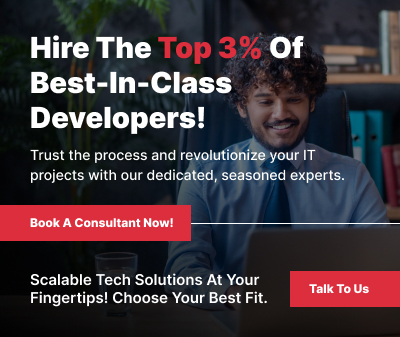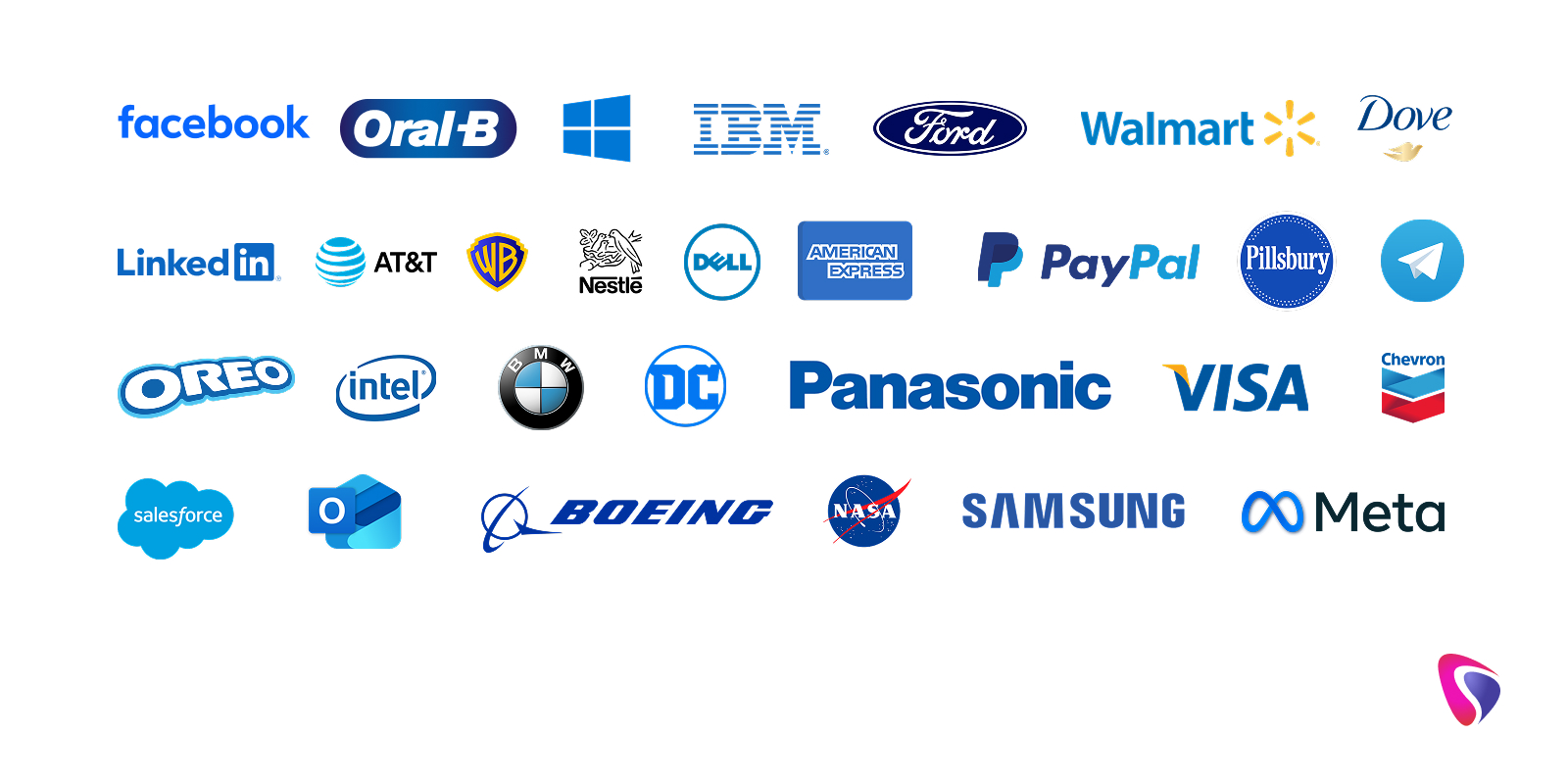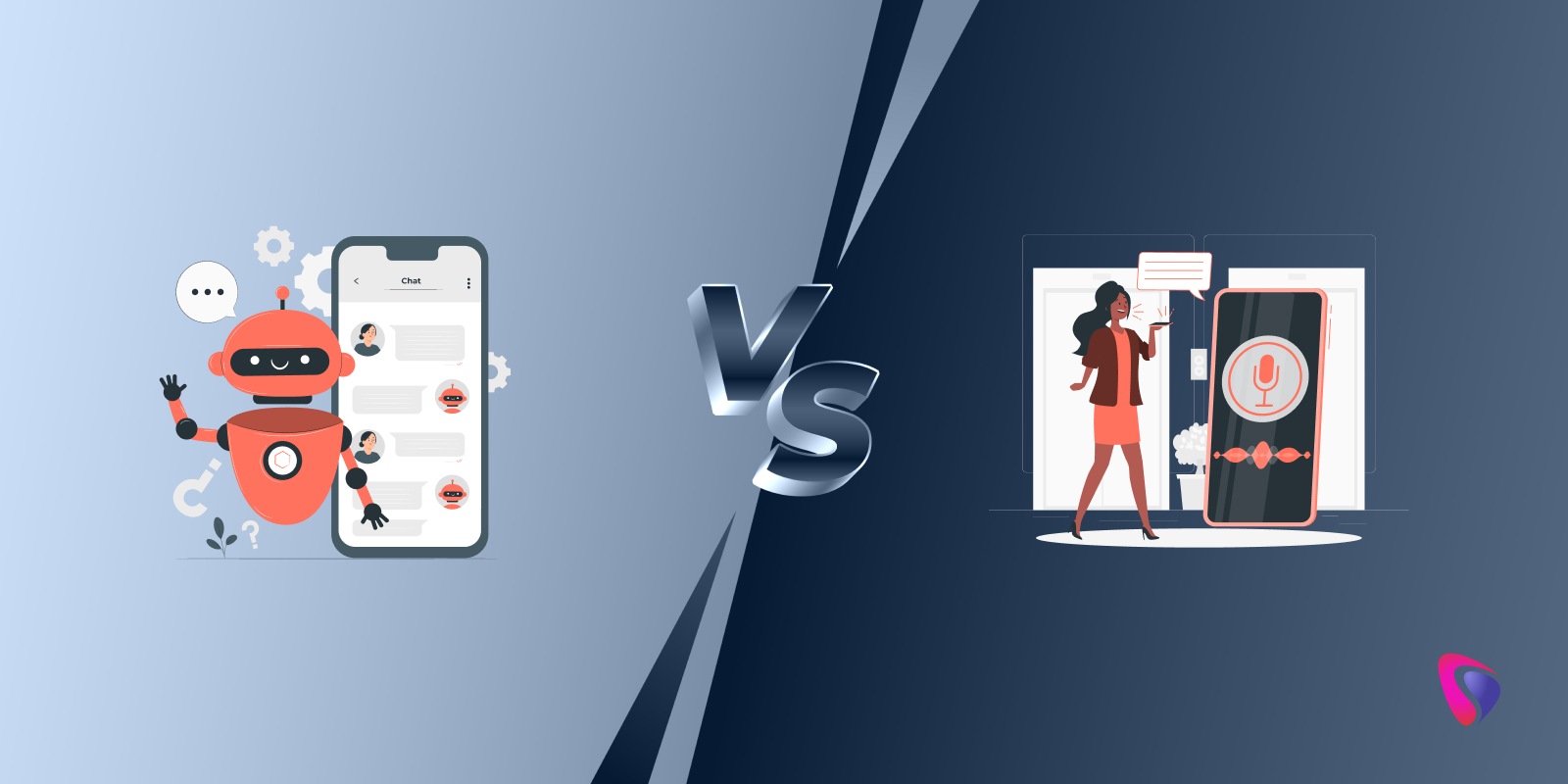
Quick Synopsis - In this day and age, hiring employees is hard, but retaining them is harder. 31% of new hires quit within six months. There is no sure-shot formula to ensure that employees stay with your company for a long time. However, hiring the right employee can minimize the chances of churn. With a perfect roadmap for hiring the right employee for your business, companies may not have to deal with the drama that follows traditional hiring.
HR professionals must understand that hiring employees is not just filling a vacancy. It is the beginning of a professional relationship that benefits the employee and the company. The average cost of hiring an employee in 2025 is $4,700. If the employee quits within 6 months, it results in big losses, including training costs, missed opportunities, and missed project deadlines.
Depending solely on LinkedIn and job portals is a bad hiring strategy. Smart hiring is the new normal, where HR professionals use AI-powered tools, predictive analytics, and structured processes to find and hire the right employees. With the aforementioned right tools, trailblazing technologies, and smart hiring platforms, recruiters can find the right talent for the position.
This blog will discuss the roadmap to hiring the right employee, related challenges, trends, and more. Keep reading.
What is a Hiring Roadmap?
Think of a hiring roadmap as a detailed plan. This plan includes what the company intends to achieve by hiring employees. It also includes the ideal processes to follow, resources required, and the deadlines to achieve these hiring goals.
All these processes and strategies must align with the company’s long-term vision. Such a structured approach ensures that HR and stakeholders are on the same page, helping them understand business pain points and fill roles effectively.
Why Do Companies Need a Roadmap to Hire the Right Employee?
Below are some reasons why companies need a proper roadmap to hire the right employee for their business needs.
- Tailored to Business Needs
Recruitment efforts must align with business needs. Whether it's supporting strategic growth, launching a new product/service, or targeting a new market, the company needs the right employees at the right time. With a roadmap, the company can accomplish these objectives without sacrificing quality or productivity.
- Workforce Planning
There is no point in digging a well when you are thirsty. The company must realize beforehand that they don’t have employees with the right skills for a particular position. As and when an employee resigns, a replacement should be ready. This ensures that crucial projects are not adversely affected.
During peak seasons like sales or festive occasions like Christmas, more employees may be required to manage the increased workload. Proper planning is helpful under such circumstances.
- Resource Allocation
A hiring roadmap without a budget is futile. Recruiters must know how much to spend on what. Be it salaries, ads, tools, or third-party agencies, everything must have a budget to avoid overspending. Also, recruiter duties must be clearly outlined to help them focus on critical tasks. Without the proper tools, hiring becomes tiring. Give recruiters the best software and systems to help them hire effectively.
- Faster and Smarter Hiring
Planning beforehand ensures recruiters don’t have to spend endless hours hunting for the right candidate. With the right plan, the recruiters have enough time to choose a candidate who ticks all the boxes. In this way, they can hire an employee with the relevant skills and knowledge and not rush to hire someone just to fill the vacancy.
- Improved Candidate Experience
When recruiters hire with a plan, it streamlines the entire process. There are minimal hiccups, and everything goes as planned. Everyone, including HR, department heads, team leaders, and candidates, is in the loop. This streamlined hiring process earns the candidate's trust, and he forms a positive impression of the company.
Data-Driven Decisions
Every hiring decision must be calculated and in the interest of the company. From the cost to hire each candidate to the duration, everything must follow a plan. Based on past experiences, market reviews, and other sources, recruiters must choose the right channel to find candidates.
Step-by-Step Guide to Creating a Roadmap for Hiring the Right Employees
Why does hiring the right employee matter? Bad hires can cost companies $14,900 on average. 76% of managers admit to hiring the wrong person for the job. The problems don’t end with the bad apple leaving the company. Finding a new candidate, training him, and giving him a pay raise puts an additional burden on the company. Instead, hiring the right employee saves time and money, brings innovation and a new perspective, while boosting team morale.
Below is a 9-step guide to creating a roadmap for creating a hiring roadmap for your company.
1. Consistent With Business Objectives
- Consult with department heads and stakeholders to understand the company's short and long-term goals.
- Identify key projects, expansion plans, or role transitions.
2. Conduct Workforce Planning
- Audit the current workforce and skillsets.
- Identify gaps in the team, upcoming layoffs, promotions, retirements, and resignations.
3. Forecast Hiring Needs
- Determine how many vacancies you need to fill. List out the positions and the departments that require these employees.
- Next, set the timelines for each hire so that it doesn’t affect project deadlines or monthly/quarterly targets.
- Recruiters are advised to use a spreadsheet. If the organization permits, they can also hire specialized HR planning software that considers the following-
- Role Title
- Department
- Hiring Manager
- Priority Level
- Estimated Hiring Date
4. Set Realistic Hiring Goals and Metrics
The goals and metrics should include the following-
- Time Required to Fill the Vacancies
- Cost-Per-Hire
- Diversity Goals
- Retention Rates Post-Hiring
5. Define the Hiring Stages
From job postings, sourcing, screening, interviewing, to onboarding, every process must follow a uniform procedure. This uniformity ensures effective time management, communication, and transparency. Moreover, every employee who is part of the process is aware of their duties and responsibilities. This involves recruiters, hiring managers, interview panels, and others.
6. Create a Budget
Create a detailed budget that considers the end-to-end hiring costs. These costs must include key aspects such as job boards, ATS tools, recruiter fees, branding, referral bonuses, and others. Below are the approximate hiring costs and their breakdown.
| Category | Estimated Cost USD | Description |
|---|---|---|
| Job Boards | $200 - $1,500 per month | Basic listings may cost $200, while sponsored posts can cost $500 - $1,500. |
| ATS Tools | $100 - $1,500 per month | Varies by tool and features |
| Recruiter Fees | 15% to 25% of the candidate’s annual salary | External recruiters usually charge a specific percentage of the candidate’s base salary |
| Employer Branding | $500 - $5,000+ per campaign | Includes social ads, video content, Glassdoor upgrades, and employer microsites |
| Referral Bonuses | $500 - $5,000 per hire | Common range depending on role, seniority, and talent availability |
7. Identify Sourcing Strategies
- Choose from channels such as LinkedIn, job boards, employee referrals, campus placements, and agencies.
- The best channel depends on where you can find the best talent that suits your needs and fits your budget.
- Be specific about the talent you want to hire. Attend tech events, send personalized messages, and use social media to attract such talent.
8. Create a Hiring Calendar
- Create a detailed plan that highlights the positions you want to fill. Also, state the timeframe to start and complete hiring for the positions.
- When do you expect each candidate to be on board? Add this parameter too because it will help managers and department heads plan their projects.
9. Monitor and Improvise
- Review the roadmap every three months.
- Make adjustments for unexpected resignations, business restructuring, layoffs, and new job roles, etc.
It is important to involve the relevant parties in this roadmap.
- Founders, Executives, and Leadership Team
- Department Heads / Hiring Managers
- Human Resources
- Finance Team
- Project Manager (if needed)
Involving these partners in the roadmap is important. This ensures that the roadmap aligns with business goals, team needs, and available resources. Hiring becomes faster, smarter, and more coordinated.
10. Step Specialized Roadmap to Hire the Right Employee
In the above section, we discussed the process to create a hiring roadmap. That said, not every roadmap is the same. Even with detailed guidance, tutorials, and the presence of skilled employees in the organization, things can go haywire. Below is an example of a roadmap to hiring the right employee for your business.
Step 1. Focus on the Problem, Not the Vacancy
Before creating a job description, ask yourself: What is the business challenge that this hire solves? Once you know the challenge the employee is expected to solve, it will help you create the right job description. Analyze the department facing issues and understand the pain points. Get to the bottom of the matter. Examples of introspection include the following -
- Are sales not happening even though leads are pouring in? - Maybe the solution is to hire a sales executive who patiently handles potential clients and gently persuades them into becoming loyal clients.
- Are we not able to develop an app as per the client’s expectations? Does he want advanced features? - The existing developers may not be proficient in a particular technology/programming language. It would make sense to transfer them to other projects and hire a senior developer with sufficient knowledge and experience.
- Are customers frustrated because their tickets take a long time to get resolved? - Even in smaller startups or mid-size companies, a large number of queries or issues can overwhelm employees. The company may benefit from hiring a customer service manager or a support specialist who can prioritize queries and work as per the ETAs.
Step 2. Decide the Outcome: Job Descriptions are Outdated
Most job descriptions outline the job duties and responsibilities. The job description will attract hundreds of applications. Many individuals can perform the task, but the million-dollar question is - Can they fulfill business expectations? Instead of the job description, companies should define the mission. How? Examples include the following -
- What can an employee employee in 6 - 12 months? - Can they boost productivity by 30% or reduce customer attrition by 25%?
- What are the quantifiable benefits of hiring an employee? - Quantifiable results include performance in numerical terms, KPIs influenced by the individual, and more.
- How will the employee’s role evolve with business expansion? - Will the candidate’s role stay stagnant? The company must have a vision for each employee/department. If it's a short-term role, it's not a problem, but if they expect the employee to stick around for long, he needs to know if he will head a team in the future, manage a department, or explore new markets.
Step 3. Create a Scorecard for the Ideal Candidate
Many employers make the mistake of hiring candidates by relying on their gut instincts. The old-school way of hiring employees may not work in 2025. Modern-day projects have deadlines, and failing to achieve them can have disastrous consequences. Hence, it would make sense to hire with clear expectations beforehand.
Below is an example of a scorecard with clear criteria.
- Mandatory Aspects - These are the non-negotiables. For example, if a company is hiring an AI/ML engineer, technical expertise is a must. The candidate should have strong data wrangling and programming skills (Python), a detailed understanding of ML fundamentals, and model valuation expertise.
- Optional but Desirable Skills - These skills add value, but they may not be essential. In the case of an AI/ML engineer, these skills would be knowledge of deep learning frameworks, distributed computing knowledge, MLOps experience, and more.
- Deal-Breakers - These are deal breakers when hiring an employee. When hiring an AI/ML engineer, red flags would be poor implementation experience, weak coding skills, shaky fundamentals, and a lack of ethics.
Whether it's the first or the last round of interviews, the management should follow the above approach with specific criteria. Following this approach ensures that the recruiters conduct skill-based hiring and not based on their gut feelings.
Step 4. Hunt for Good Candidates
Skilled and experienced candidates know their worth. They will not hunt actively for jobs. If the company wants a skilled and experienced candidate, they will have to actively hunt, scout the market, and choose the best candidate. Below are some tips to hunt for the best candidates.
- Engage on LinkedIn with relevant content and connect with skilled professionals.
- Interact with recruiters in your network who can recommend the right talent for the position.
- Be a part of niche Slack groups, subreddits, and virtual meetups. These are places where you can find talented and experienced candidates who are not actively searching for jobs.
Step 5. Conducting a Practical Assessment
Interviewing with a set of questions will not reveal much about the candidate. The candidate may have prepared well, or he may be good at advertising his skill set. The real test lies in how he performs in the real world. For example, if you are an app development company hiring technical professionals for your organization, consider the following assessments for candidates.
- Mobile App Developer - Fix bugs and crashes in an app, refactor the code, and suggest improvements.
- UI/UX Designer - Audit the current onboarding flow, and redesign it to achieve specific objectives (clarity or speed of value delivery).
- QA Engineer - Perform exploratory testing across devices, report bugs, and propose three critical regression test cases.
These are examples of practical assignments that candidates should be given to assess their knowledge and performance in real-world scenarios. By following this process, companies can prevent bad hires and save time and money.
Stage 6. Align Interviewers Along Scorecard
As mentioned above, the candidates must be hired based on their skills and efficiency. Then again, the interviewers must know which questions to ask. Often, the interviewers are team leaders and managers who are good at their jobs, but they are terrible at interviews.
Regardless of the number of rounds, the interviews assessing the candidate’s experience, technical skills, and attitude must be on the same page. Also, these interviewers should be trained on how to conduct interviews, which can improve the outcomes. This training should include the following aspects-
- Specific traits or skills that they must evaluate during the interview.
- Focus on their core tasks and avoid decision-making based on gut feelings.
- How to use the scorecard in debrief sessions.
Step 7. Reverse Interview
The interview should go both ways. Interviewers will ask questions to ensure they are hiring the right candidate. On the other hand, the candidate should know if the company he joins is the right one for his career. Encourage the candidate to ask questions about the company. The questions can be around the following-
- Leadership Style
- Team Dynamics
- Company Goals and Challenges
- Long-Term Vision
- Perks
- Team Bonding Activities
When candidates get the right answers to their questions, they will make a wise decision that considers multiple factors besides the salary package.
Step 8. Hire For Culture Addition, Not Imitation
Many companies aim for diversity, but it should not be confined to different nationalities and ethnicities. Diversity of thought should also be a point of consideration. Don’t hire people who behave like sheep in the herd. It may create employees, not innovators. So, it makes sense to hire a person who brings new ideas and perspectives. Examples include the following -
- An individual who asks unique and thought-provoking questions.
- New ideas that can change processes or outcomes.
- Individuals from a new industry who see things differently.
These ideas may come from candidates or newly joined employees. Not all ideas may be feasible, but a creative mind will always aim for innovation.
Step 9. Balance Speed With Precision
Recruiters are often under immense pressure to hire a candidate and close the vacancy. This often results in hiring the wrong person. Hence, it is advisable to balance speed with precision while hiring the right candidate for the company. Do not skip negative signs or traits while hiring. The following tips might help.
- Be proactive while scheduling interviews and providing feedback.
- Don't ignore red flags. Ignore the particular candidate and proceed to the next one.
- Avoid hiring the wrong person because it will cost the company in the long run.
- When unsure, recruiters must consult their managers or department heads.
Step 10. Close With Clarity and Purpose
When the recruiter is ready to make an offer, they should not waste time and delay it. Candidates may be negotiating with multiple companies. At the same time, it is key to keep everything transparent. Following the tips below may help.
- Remind candidates about how vital their role is and how it can be a game-changer for their career.
- Tell the chosen candidate that you are happy to have him on board.
- The chosen candidate should know what he is being hired for and how his role will shape up in the coming months.
Hiring Challenges for Employers in 2025
Companies face many challenges while hiring the right employees. Whether it's an app development company, a real estate firm, a healthcare institution, or a manufacturing unit, everyone faces challenges. That said, these challenges must not bog you down. There is a solution to every challenge. Below are the challenges that companies face in 2025 while hiring employees.
- Challenge - Attracting top talent in a competitive market.
- Solution - Strengthen employer branding and offer lucrative benefits.
- Challenge - High volume of unqualified applications.
- Solution - Use AI-enhanced screening tools to filter resumes.
- Challenge - New hires may not align with the company’s culture.
- Solution - During the interview, check if the candidate’s values align with the company.
- Challenge - Time-consuming hiring process
- Solution - Streamline steps with automation and clear timelines.
- Challenge - Biased recruitment is often based on gut feelings.
- Solution - Implement structured interviews and diverse panels.
- Challenge - Poor candidate experience.
- Solution - Ensure prompt communication and personalized interactions.
- Challenge - Retaining top talent
- Solution - Offer supportive onboarding and ample growth opportunities.
- Challenge - Misalignment between job description and role.
- Solution - Ensure robust team collaboration to define job roles and expectations.
- Challenge - Lack of data-driven hiring decisions.
- Solution - Track hiring metrics and refine strategies accordingly.
Top 10 Hiring Trends for Companies in 2025
Hiring has changed drastically in the past few years. There is no compulsion to follow strict rules, and neither do recruiters follow a cookie-cutter approach to hiring employees. Each designation requires a different skill set, and the hiring process should reflect the same.
Be it hiring full-time or freelance employees, technical/non-technical, or project-based hiring, companies adopt a flexible approach. This flexible approach prioritizes people, their needs, and how to get the best out of them while providing them opportunities for growth and learning. Most importantly, companies use cutting-edge tech like AI-powered applicant tracking systems, chatbots, and skill assessment platforms to enhance the hiring process. Below are 10 hiring trends for companies in 2025.
- AI-Powered Recruitment - Automated tools accelerate the screening, sourcing, and assessment of candidates.
- Prioritizing Skills Over Degrees - Employers prioritize practical skills and certifications over formal education.
- Remote-First Hiring - With global recruitment becoming rampant after Covid-19, companies have fully embraced fully remote and hybrid roles.
- Diversity-First Strategies - DEI hiring metrics are now integrated into core recruitment KPIs.
- Candidate Experience as Differentiator - Seamless, fast, and personalized application processes attract top talent.
- Boomerang Hires Rise - Rehiring ex-employees has become a formidable retention and efficiency strategy.
- Green Collar Recruitment - Demand surges for sustainability-forced roles across multiple sectors.
- Fractional & Project-Based Roles - Flexible, part-time, and project-based leadership roles are trending.
- Internal Mobility & Reskilling - Companies are filling roles by upskilling and promoting existing employees.
- Hyper-Personalized Employer Branding - Targeted, value-driven messaging attracts mission-aligned talent.
Final Thoughts
There is no perfect roadmap to hire the right employee for your business. Every company is different, and so are its requirements. Some may want to hire full-time or freelance employees, while others may want project-based talent. Hence, a standard roadmap will not work for all. Following the tips mentioned above will help, but the leadership team will have to improvise and create a bespoke roadmap that aligns with company goals.
Has hiring employees become a headache for you? No worries, you can count on Hyperlink InfoSystem. With over a decade of experience, Hyperlink InfoSystem has completed 3000+ projects for innumerable companies. We are not just an app development company; think of us as solution providers.
We understand the challenges that modern businesses face. Apart from embracing new technologies, companies also have to hire the right talent, prepare for scalability, and manage costs. If you want to hire Java developers, Flutter specialists, AI/ML engineers, or other specialized talent for your project, we can help you with the same. More than 5000 companies can vouch for our services. Schedule a consultation with one of our experts to see what we can do for you.
Connect Now!
FAQs
1. Is creating a roadmap for hiring the right employee a complicated process? Can anyone do it, or does it require specialized knowledge?
Creating a roadmap to hire the right employee is not rocket science, but making it happen requires a structured approach, robust strategy, and knowledge of the best practices. Times have changed, and hence what worked 20 years ago will not work now. Creating a hiring roadmap now requires companies to keep up with the current times and observe companies that are successfully doing it.
Can anyone do it? The answer is yes, but it requires guidance. Firstly, a company must have a clear understanding of business needs, followed by gaining knowledge of hiring workflows. Now it is time to plan and make adjustments as required. Lack of experience can make companies commit silly mistakes, which can lead to bad, costly hires.
Does hiring the right employee require specialized skills? Not necessarily, but having people on the team with specialized skills helps. Professionals with specialized skills in the hiring world include the following-
- HR professionals - Bring structure and compliance awareness.
- Recruiters - Skilled at sourcing and assessing talent.
- People Ops/HR Tech Experts - Helps with tools and automation.
2. Is hiring dedicated resources a good strategy for business?
Hiring dedicated resources can be a powerful strategy for many businesses, but it’s not the right one for all. What does this mean? This means that hiring dedicated resources can be beneficial for companies if it aligns with their project type, goals, and resource requirements.
Hiring dedicated resources can be a game-changer under the following circumstances:
- Long-Term Projects – Ensures continuity and aligns fully with your goals.
- Focused Attention – Full commitment boosts quality, speed, and accountability.
- Cost-Effective Scaling – More affordable compared to in-house teams, especially offshore.
- Faster Onboarding – Quick deployment with ready-to-go talent.
- More Control – Balanced model offering control without full in-house costs.
Situations when hiring dedicated resources is not the best choice.
- Short-Term Projects - Freelancers or fixed-scope outsourcing is a better choice.
- Lack of Internal Leadership - Dedicated teams may lack direction and impact.
- Budget Constraints - Dedicated resources can be expensive compared to freelancers.
- Inconsistent Work - Companies risk paying for idle time.
3. Why should I trust Hyperlink InfoSystem for my hiring needs?
Hyperlink InfoSystem is one of the top app development companies in India. We are more than an app development company, though. With a fleet of over 1000 software professionals, including developers, testers, AI/ML engineers, and others, we have the resources and experience to handle projects from start to finish. Below are some reasons to trust Hyperlink InfoSystem.
- 12+ Years of Industry Experience
- 5000+ Projects Completed in the Last Decade
- 1000+ Fleet of Dedicated Professionals
- Client-Focused Services
- Strict Adherence to Deadlines
- CMMI Level 3 Company
- 3000+ Satisfied Clients
Want to kickstart your new project with the right talent? Whether you're hiring part-time, full-time, or freelance employees, Hyperlink InfoSystem is here to help.
4. Are applicant tracking systems more efficient than manual hiring?
If you are developing a roadmap to hire the right employee for your business, it makes sense to invest in an applicant tracking system, especially for large companies that hire regularly. Small companies hiring talent once in a while can skip applicant tracking systems. It won’t add much value or provide significant benefits. Including ATS in your hiring roadmap results in the following benefits:
- Future-Ready Infrastructure - Even if you’re a small enterprise, ATS prepares your organization for future hiring and growth.
- Consistency & Compliance - Ensures uniform processes and audit trails.
- Better Quality of Hire - Provides visibility into processes that work and those that require refinements.
- Time & Cost Savings - Automates routine tasks, allowing teams to focus on strategic initiatives.
- Competitive Edge - Top candidates expect a fast, professional experience, and ATS enables the same.
5. What is the difference between proactive hiring and reactive hiring?
When creating a roadmap to hiring the right employees for your business, you must first decide whether you want to hire reactively or proactively. There is a difference between the two. Suppose an employee resigns, or there is too much work in a particular department. This is when a company starts to hunt for new employees. Such hiring is called reactive hiring because the company reacts to a particular situation.
In contrast, proactive hiring is when a company anticipates increased workload or attrition in a few departments. When the company observes these signs, it starts looking for new employees. Unlike reactive hiring, the company does not wait for employees to leave. Think of it as waterproofing the terrace before the monsoon.


















